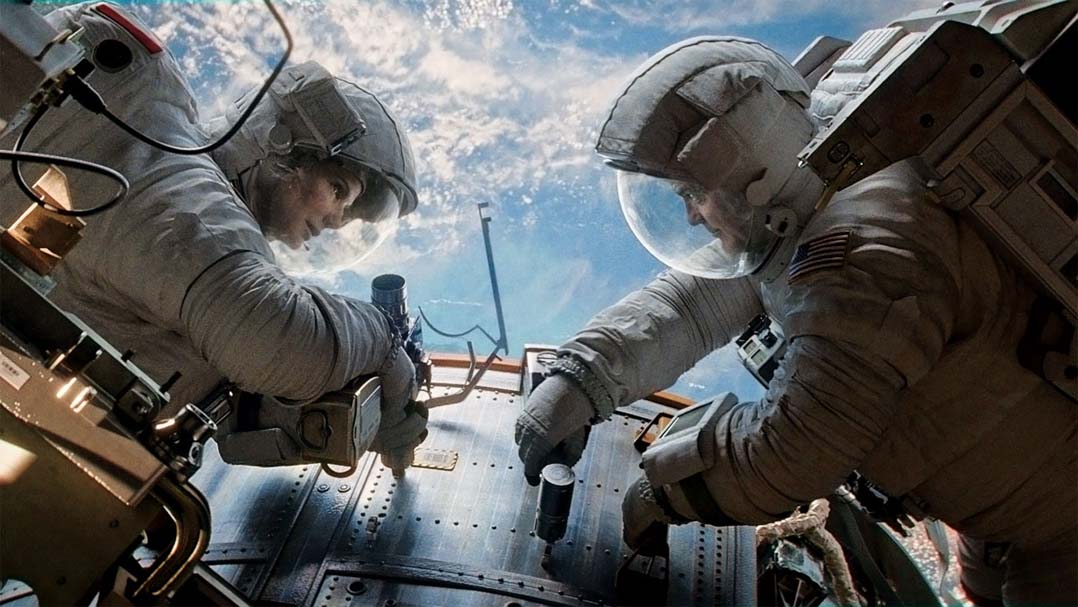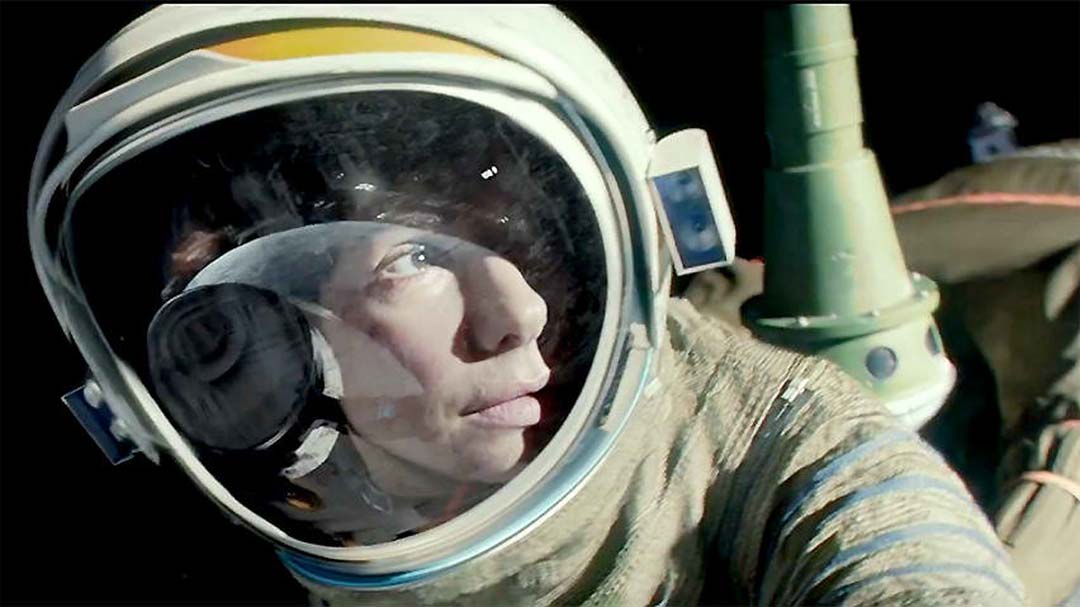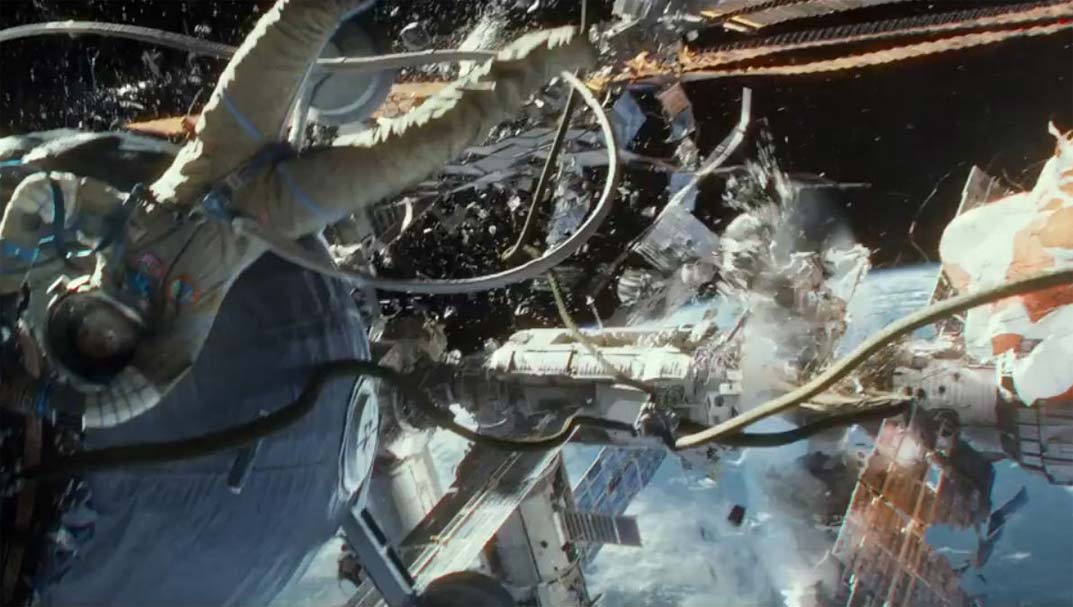3D in film is a gimmick. Who cares if a popcorn or booger looks like it’s hurtling towards you? Because of its unnecessary nature, I’ve spent years actively hating and avoiding watching films in 3D. As I walked towards the theater for my screening of Gravity a few weeks ago, I was dismayed when I realized it would be shown in 3D. I let out an audible groan, I alerted my friend of the unfortunate circumstance facing us, and I gritted my teeth as the film began.
In that moment, I was sure that my protestations against 3D would be justified, enhanced even. As the credits rolled, however, I realized something: As Hollywood slowly realizes how unnecessary a gimmick 3D is and begins to move away from the fad, Gravity stands at the top as a prime example showcasing just how powerful and truly innovative the format can be. If you’re too lazy to read the rest of my review, know this: Watch Gravity on a 3D IMAX screen, no ifs, ands, or buts.
http://youtu.be/H4coTNta-YA
Gravity
Director: Alfonso Cuaron
Rating: PG-13
Release Date: October 4, 2013
Dr. Ryan Stone (Sandra Bullock) is a biomedical engineer on her first trip to space to fix malfunctioning equipment on a sattelite. Her captain, Matt Kowalski (George Clooney), is an experienced astronaut on his final voyage in space. As he floats aimlessly in space to break a spacewalking record, Stone’s inability to adjust to the lack of gravity leaves her nauseous and unable to work effectively. Despite the idyllic nature of space’s nothingness, the crew is alerted to debris floating in their direction as the product of a Russian missile destroying space stations. Suddenly, Stone and Kowalski find themselves in danger as the shrapnel makes contact with their ship, killing the entire crew and leaving Stone hurtling through space.
As she begins to reflect on her life, Kowalski attempts to keep her calm as he rescues her. However, Stone’s oxygen supply is dangerously low, and Kowalski’s jet pack begins to lose thrust. When all seems lost, they miraculously make it back to a space station… but the threat is far from over.
At first glance, Gravity might seem limited in conflict; however, once the film begins, you realize that the inherent conflict of being alone in space is what drives the entire film. The entire film takes place within the confines of the first conflict until its resolution – that is to say that there are no flashbacks created as an attempt to contextualize the story or to create a false sense of empathy for Dr. Stone. All of the pertinent background information is shared through passing comments shared in conversations between Stone and Kowalski.
Furthermore, it’s refreshing to have a film take place entirely in space with no aliens whatsoever. Instead, the main focus, as it should be, is solely on Dr. Stone and her attempt to return to Earth. By focusing on Bullock with no distractions (background ploys, shallow attempts at creating empathy, etc.) beyond the conflict at hand (i.e. (wo)Man vs. Nature (space)), Gravity is both a psychological thriller and a character study that exemplifies just how frightening it can be to be lost in space… as if we needed a film to understand the fear.
Alfonso Cuaron’s known for his direction and focus on exceptional cinematography, and it shows in spades in Gravity. Despite the film being shot almost exclusively on a green screen, the camerawork in this film is spectacular. Regular Cuaron collaborator Emmanuel Lubezki’s (Children of Men, The Tree of Life) camerawork plays just as much of an important role in the film as Bullock does. After all, this is the man who won a BAFTA for Cinematography in Children of Men. Don’t let the heavy use of CGI fool you: Gravity is breathtaking in its cinematography.
This is supported by the aforementioned exceptional use of 3D. Given the nature of space where the basic concept of direction is essentially deemed useless, there’s no telling which way is up. With every rotation of a satellite, every roll Dr. Stone takes in her free fall, every piece of scattered debris is exacerbated and accentuated by the extra depth that 3D allows. Never before have I contemplated what an extra dimension could do for a film.
What’s used and exploited as a gimmick and cash cow by lesser directors has been used to actually bring purposeful depth to Gravity, both figuratively and literally. The entirety of space simply would not have been the same had I seen Gravity on a normal screen. You’ll want to shell out the extra $10 for 3D, possibly even more on an IMAX screen, because every inch, every centimeter, every pixel of the screen plays an important role in this film. Who would have known that mise en scene would be so important for a film where complete emptiness takes up the majority of the screen?
Gravity is literally breathtaking. As Dr. Stone desperately gasped for air as her oxygen tank quickly emptied out, I, too, took deep breaths alongside her. Was it because I truly felt for her? Was it because the 3D made me feel as if she were right in front of me, just out of arm’s reach? Was it because of the theater’s sound system emphasizing every small sound effect? Perhaps all of this played a role, yet it’s because of everything I’ve mentioned up to this point that I urge every single one of you to watch Gravity. Films like this are the reasons why theaters exist, why Hollywood is the titan of industry that it is, why people like me spend hours of our lives writing and analyzing every second of every film we have ever seen and will ever see.
I truly believe 3D films will fade away by the end of 2014. If so, let Gravity be the medium’s crowning achievement. If, for some reason, 3D overstays its welcome (as if it hasn’t already), let Gravity be the film that demonstrated just how powerful and awe-inspiring the format truly can be.
Score: 9 out of 10



